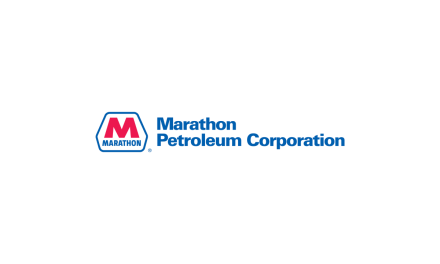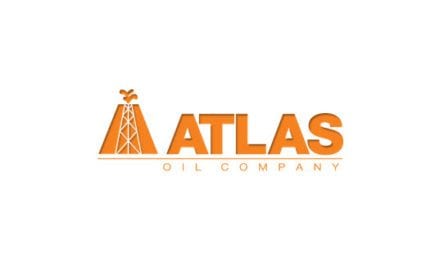Buy the Dip?
- Multiple bank analysts issue a buy recommendation for crude oil.
- Seasonally, crude oil prices are near a bottom.
- U.S. inventories of both distillate and gasoline are now below last year’s levels.
- Cold weather gives natural gas prices a rally in a bear market.
 Sincerely,
Alan Levine, Chairman of Powerhouse
Sincerely,
Alan Levine, Chairman of Powerhouse

The Matrix
Buy the dip? That is the recommendation from multiple bank analysts this week. Expectations for tightening global inventories later this year made the move below $50 in West Texas Intermediate (WTI) crude futures hard to resist. Could the first inventory draw in U.S. crude stocks in over nine weeks be a start of a trend? A lot depends on the willpower of OPEC and the power of the U.S. producer.
OPEC discipline is essential to the bullish call. Compliance by OPEC was pegged at 91% in February. Estimates by the Paris-based IEA are for a 500,000 barrel per day deficit of supply if OPEC can remain compliant through June, when the current deal expires. While the Saudi Oil Minister lauded the oil-producing group’s “impressive performance” so far, the Saudis have shouldered the brunt of the cut. The Kingdom has made it known that this will not last without participation from the rest of the cartel. Moreover, an extension of the deal past June will require the participation of non-OPEC as well.
OPEC aside, buying crude oil during the first quarter of the year has historical precedent. An index of crude oil prices going back to 1985 shows the lowest average price occurs eight weeks into the year.

Supply/Demand Balances
Supply/demand data in the United States for the week ending March 10, 2017, were released by the Energy Information Administration (EIA).
Total commercial stocks of petroleum decreased 7.8 million barrels during the week ending March 10, 2017.
Draws were reported in stocks of gasoline, fuel ethanol, K-jet fuel, distillates, residual fuel oil and propane. There was a build in stocks of other oils.
Commercial crude oil supplies in the United States fell to 528.2 million barrels, a decrease of 0.2 million barrels.
Crude oil supplies increased in three of the five PAD Districts. PAD District 1 (East Coast) crude oil stocks grew 2.2 million barrels, PADD 4 (Rockies) crude stocks expanded 0.7 million barrels and PADD 5 (West Coast) stocks increased 0.2 million barrels. A draw of 0.9 million barrels in crude stocks was reported in PADD 2 (Midwest) and a draw of 2.4 million barrels took place in PADD 3 (Gulf Coast).
Cushing, Oklahoma, inventories increased 2.1 million barrels from the previous report week to 66.5 million barrels.
Domestic crude oil production increased 21,000 barrels daily to 9.109 million barrels per day.
Crude oil imports averaged 7.405 million barrels per day, a daily decrease of 745,000 barrels. Exports fell 180,000 barrels daily to 717,000 barrels per day.
Refineries used 85.1% of capacity, a decrease of 0.8 percentage points from the previous report week.
Crude oil inputs to refineries decreased 20,000 barrels daily. There were 15.472 million barrels per day of crude oil run to facilities. Gross inputs, which include blending stocks, fell 103,000 barrels daily to 15.756 million barrels daily.
Total petroleum product inventories saw a decrease of 7.6 million barrels from the previous report week.
Gasoline stocks decreased 3.1 million barrels; total stocks are 246.3 million barrels.
Demand for gasoline fell 14,000 barrels per day to 9.254 million barrels daily.
Total product demand decreased 436,000 barrels daily to 19.464 million barrels per day.
Distillate fuel oil supply fell 4.2 million barrels to 157.3 million barrels. National distillate demand was reported at 4.409 million barrels per day during the report week. This was a weekly increase of 318,000 barrels daily.
Propane stocks fell 0.8 million barrels to 44.5 million barrels. Current demand is estimated at 0.889 million barrels per day, a decrease of 583,000 barrels daily from the previous report week.
Natural Gas
According to the EIA:
Unseasonably mild temperatures continued during the storage week ending March 10, resulting in below-normal withdrawals from working gas storage. Net withdrawals from storage totaled 53 Bcf, compared with the five-year (2012 – 2016) average net withdrawal of 85 Bcf and last year’s net withdrawal of 9 Bcf during the same week. Mild temperatures throughout the week for most of the Lower 48 states contributed to decreased heating demand for natural gas compared with normal levels and lower withdrawals from storage. Working gas stocks total 2,242 Bcf, which is 395 Bcf more than the five-year average and 236 Bcf less than last year at this time.
Colder-than-normal temperatures gripped the East Coast this week. This last surge of winter demand is likely too little too late for natural gas bulls. Natural gas futures prices attempted a run back over $3.00 on the colder forecasts. But with the official start of spring next week, we expect prices to resume the downtrend.
Futures trading involves significant risk and is not suitable for everyone. Transactions in securities futures, commodity and index futures and options on future markets carry a high degree of risk. The amount of initial margin is small relative to the value of the futures contract, meaning that transactions are heavily “leveraged.” A relatively small market movement will have a proportionately larger impact on the funds you have deposited or will have to deposit—this may work against you as well as for you. You may sustain a total loss of initial margin funds and any additional funds deposited with the clearing firm to maintain your position. If the market moves against your position or margin levels are increased, you may be called upon to pay substantial additional funds on short notice to maintain your position. If you fail to comply with a request for additional funds within the time prescribed, your position may be liquidated at a loss and you will be liable for any resulting deficit. Past performance may not be indicative of future results. This is not an offer to invest in any investment program.
Powerhouse is a registered affiliate of Coquest, Inc.
Was this helpful? We’d like your feedback.
Please respond to [email protected].
Copyright © 2017 Powerhouse, All rights reserved.









